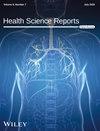Impact of Behavioral Changes in Motor Function Measurement on Presenteeism: A Prospective Study
Abstract
Background and Aims
Employees often cannot monitor their locomotor status or measure physical and motor functions during working hours owing to time constraints. This study aimed to examine whether presenteeism can be improved through repetitive motor function measurements and individual feedback provided by professionals and company employees.
Methods
Participants underwent motor function measurements and completed a self-administered questionnaire. Presenteeism was assessed using the Single-Item Presenteeism Questionnaire (SPQ). Body composition was measured using the bioimpedance method to determine limb skeletal muscle mass, which was divided by height to calculate the Skeletal Muscle Mass Index. Dynamic balance capacity was evaluated using the two-step test, grip strength, and finger floor distance (FFD)—all individually measured by a physiotherapist. A self-administered questionnaire assessed the presence of pain and lifestyle habits. Repeat measurements were conducted 6 months later using the same test items and assessments of lifestyle and exercise statuses.
Results
Of the 134 participants (aged 18–67 years), 70 (52.2%) completed the repeated measurements and were included in the analysis. The SPQ score improved from 13.1 ± 13.6% in the pre-survey to 10.7 ± 12.6% in the post-survey, indicating a trend of a 2.4% improvement. Regarding motor function, FFD demonstrated a significant improvement in flexibility, increasing from 3.1 ± 9.5 cm pre-survey to 4.6 ± 9.6 cm post-survey, with an average increase of 1.5 cm.
Conclusion
A behavioral change approach based on motor function measurements in employees significantly improved flexibility and showed a trend toward improved SPQ scores. Furthermore, the behavioral change group that initiated exercise demonstrated significant improvements in flexibility.


 求助内容:
求助内容: 应助结果提醒方式:
应助结果提醒方式:


